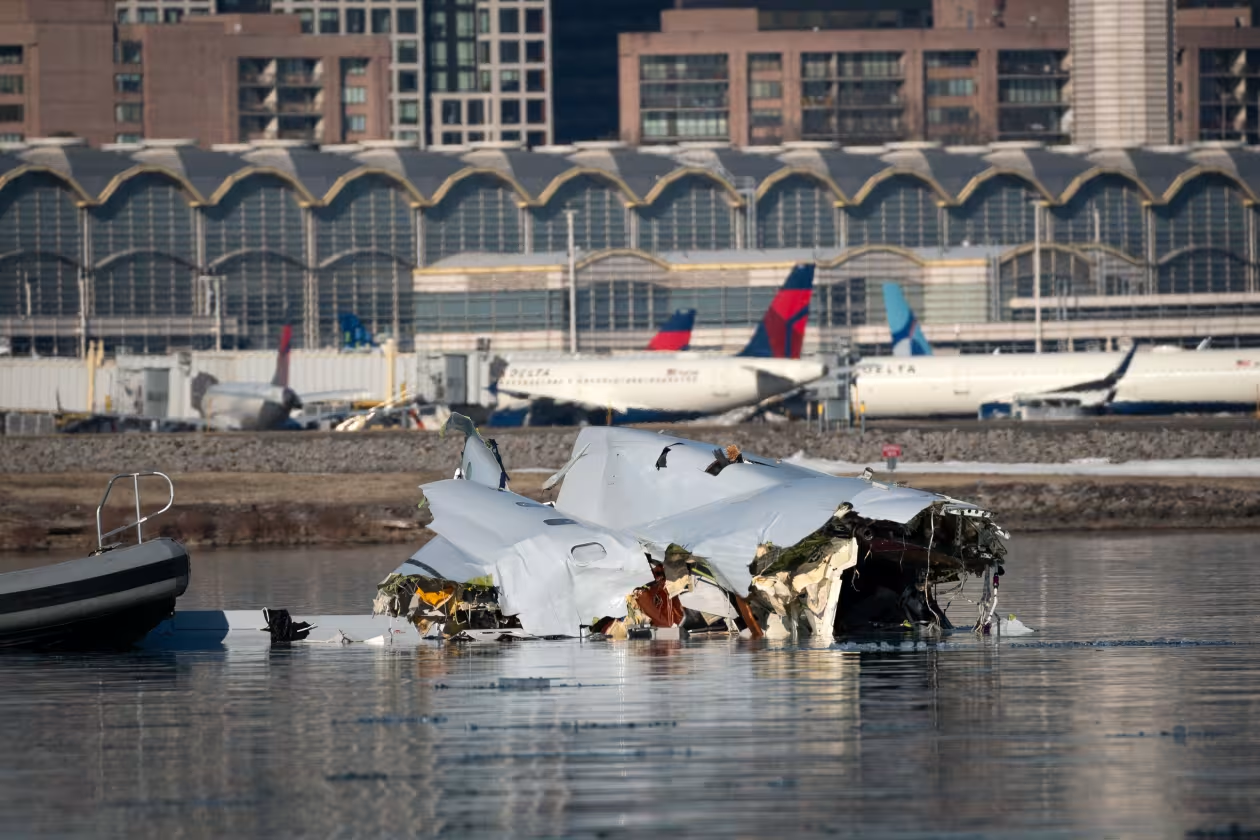Mid-Air Collision Over Potomac River Claims 67 Lives in Deadliest U.S. Air Disaster Since 2001
In a catastrophic event on the evening of January 29, 2025, an American Airlines regional jet collided mid-air with a U.S. Army Black Hawk helicopter over the Potomac River near Washington, D.C. The devastating accident resulted in the deaths of all 67 individuals aboard both aircraft, marking the deadliest aviation disaster in the United States since 2001.

Details of the Aircraft Involved
The commercial aircraft, operating as American Eagle Flight 5342, was a Bombardier CRJ700 en route from Wichita, Kansas, to Ronald Reagan Washington National Airport. Onboard were 60 passengers and four crew members. The military helicopter involved was a U.S. Army Sikorsky UH-60 Black Hawk, carrying three soldiers on a routine training mission.
Circumstances Leading to the Collision
Preliminary reports indicate that the collision occurred at approximately 8:47 p.m. Eastern Time as the CRJ700 was on its final approach to Reagan National Airport. The Black Hawk helicopter reportedly entered the jet’s flight path, leading to a catastrophic mid-air impact. Both aircraft subsequently crashed into the icy waters of the Potomac River.
Immediate Aftermath and Emergency Response
First responders, including the District of Columbia Fire and Emergency Medical Services Department, were dispatched promptly to the crash site. Rescue operations were hampered by frigid temperatures and icy conditions, with water temperatures recorded at approximately 35°F (1.6°C). Despite valiant efforts, all 67 individuals aboard the two aircraft were confirmed deceased.
Investigation and Recovery Efforts
The National Transportation Safety Board (NTSB) has launched a comprehensive investigation into the incident. Both the cockpit voice recorder and the flight data recorder from the CRJ700 have been recovered and are undergoing analysis at NTSB laboratories. Investigators are examining factors such as air traffic control communications, flight paths, and potential mechanical issues to determine the cause of the collision.
Victims and Community Impact
Among the victims were several notable individuals, including members of the U.S. figure skating community who were returning from a championship event. The loss has sent shockwaves through various communities, with families, friends, and colleagues mourning the tragic and untimely deaths of their loved ones.
Political Reactions and Safety Concerns
In the wake of the disaster, President Donald Trump addressed the nation, expressing profound sorrow and declaring a moment of silence for the victims. He also raised concerns about potential factors contributing to the collision, including air traffic control staffing and procedural issues. These comments have sparked discussions about aviation safety protocols and the adequacy of current air traffic management systems.
Historical Context
This tragedy is the deadliest U.S. aviation accident since November 12, 2001, when American Airlines Flight 587 crashed in Queens, New York, resulting in 265 fatalities. The recent collision has reignited concerns about aviation safety and the need for continual assessment and improvement of air traffic control procedures to prevent such disasters in the future.
Ongoing Developments
As the investigation continues, authorities are committed to uncovering the factors that led to this tragic event. The findings will be crucial in implementing measures to enhance aviation safety and prevent similar incidents. The nation mourns the loss of the 67 individuals who perished in this devastating accident, and efforts are underway to support the affected families during this difficult time.
For more stories and insights, visit It’s On
Instagram:@itson.ie
TikTok videos and information:@itson.ie
Share this content:





